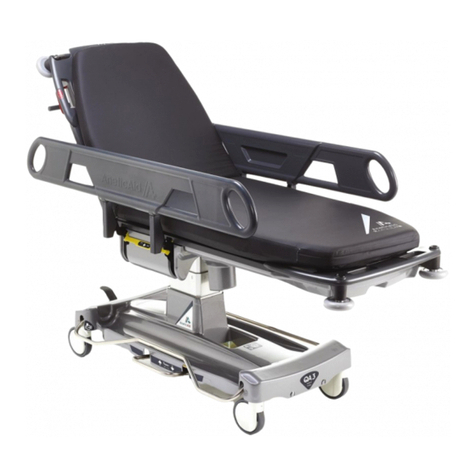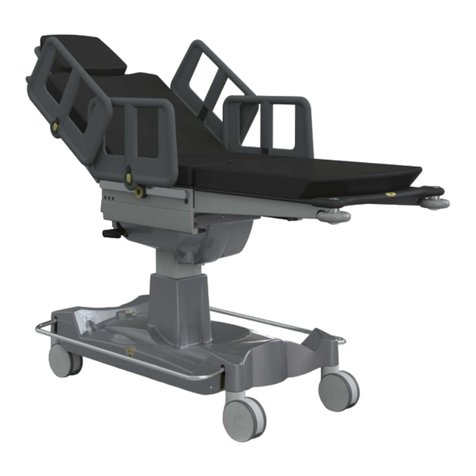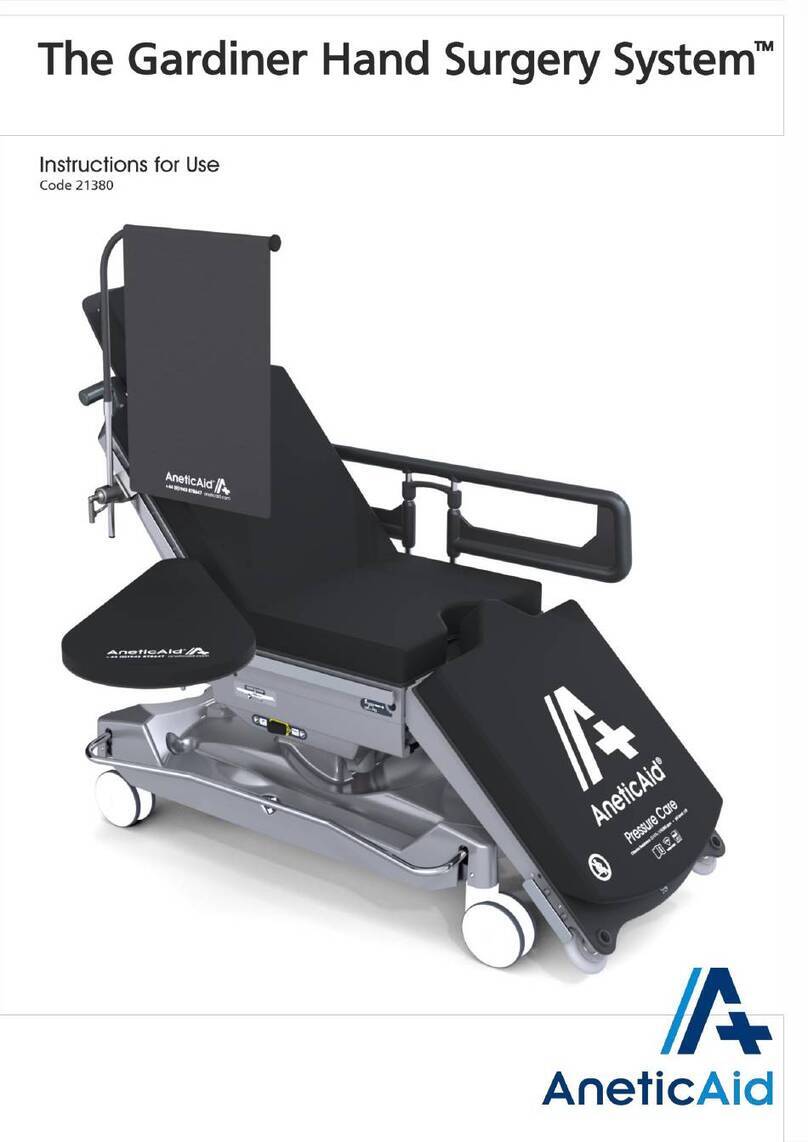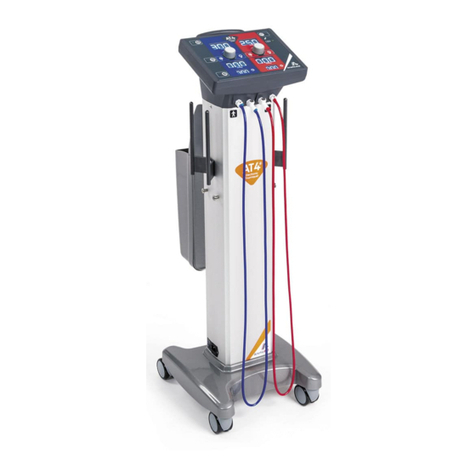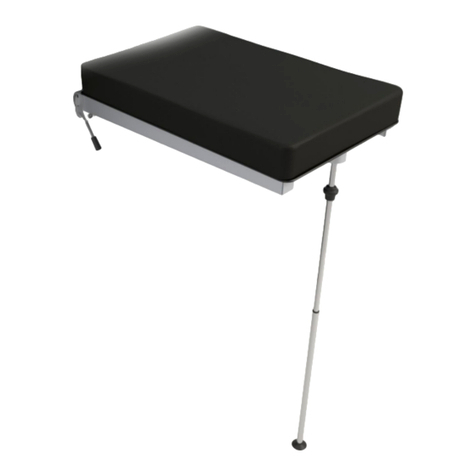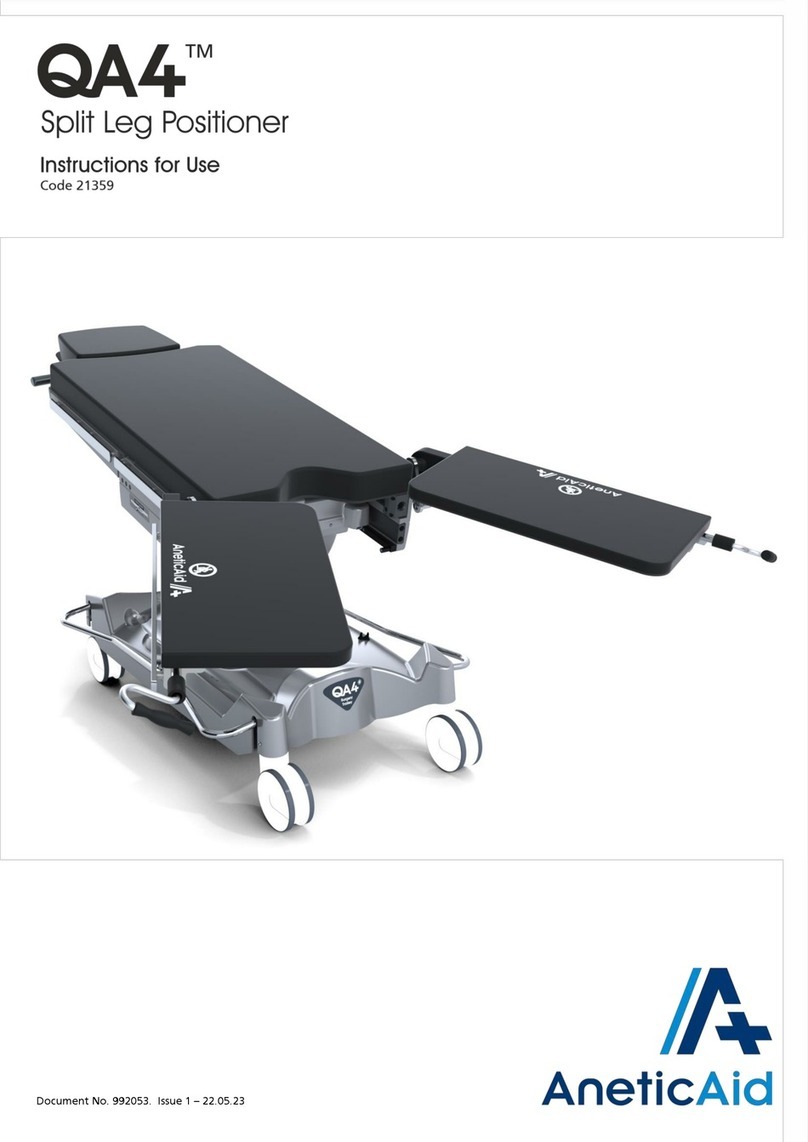
Contents Page
Document No. 992012. Issue 19 –24.10.22
Introduction
1. Introduction . . . . . . . . 1
1.1. Warnings & Cautions . . . . . . 1
1.2. Intended Use & Contraindications . . . . . 1
1.3. Device Classification . . . . . . 2
1.4. Serial Number Label . . . . . . 2
1.5. Putting the Stretcher into Service . . . . . 2
1.6. Abridged Summary of Warnings and Cautions . . . 2
2. Product Specifications . . . . . . . 4
3. Patient Stretcher Product Functions . . . . . 7
4. Emergency Stretcher Product Functions . . . . . 8
5. DRIVE Assist Product Functions . . . . . . 9
6. Powered Stretcher Product Functions . . . . . 10
7. Ophthalmic Stretcher Product Functions . . . . . 11
Manual Functions
8. Introduction to Manual Functions . . . . . 12
9. Height Adjustment . . . . . . . 12
10. Using the Brakes . . . . . . . 12
11. Using the Steering Pedal , activates 5th Wheel . . . . 12
12. Using the Side Rails . . . . . . . 12
13. Using the Backrest . . . . . . . 13
14. Using the Trendelenburg Function . . . . . 13
15. Using the Fold-away Pushing Handles . . . . . 13
16. Using the Transfusion Pole . . . . . . 14
17. Additional Features of an Emergency Stretcher . . . . 15
18. Using the Dual-articulating Head Positioner (QA3 Ophthalmic Stretcher only) 16
19. Using the Flexible Oxygen Delivery Bar Clamp . . . . 16
DRIVE Assist Function
20. Introduction to DRIVE Assist . . . . . . 17
21. Switching on DRIVE Assist . . . . . . 17
22. DRIVE Assist Handle Calibration . . . . . . 18
23. Using DRIVE Assist . . . . . . . 18
24. DRIVE Assist Handle Deactivation and Automatic Switch Off . . 19
25. Battery Charge Level Indication, Battery Charging & Maintenance . 19
26. Using DRIVE Assist with no Battery Power . . . . 19
27. DRIVE Assist Wheel Braking . . . . . . 19
Powered Functions
28. Introduction to Powered Functions . . . . . 21
29. Switching on Powered Functions . . . . . 22
30. Using Powered Functions . . . . . . 22
31. Using the Powered Height Adjustment . . . . . 22
32. Using the Powered Backrest Adjustment & Manual Over-ride Release Lever 22
33. Using the Powered KneeFlex Adjustment . . . . 22
34. Using the Combined Powered Backrest & KneeFlex Adjustment . 22
35. Using the CPR Position Button . . . . . . 22
36. Using the Emergency Stop Button . . . . . 23
37. X-ray Cassette Detection Sensor . . . . . . 23
38. Battery Charge Level Indication, Battery Charging & Maintenance . 23
Common Product Information
39. Patient Weight Limit . . . . . . . 24
40. K8 Pressure Care Mattress . . . . . . 24
41. Fitting a Replacement Mattress Cover . . . . . 25
42. Cleaning and Disinfecting . . . . . . 25
43. Product Warranty . . . . . . . 26
